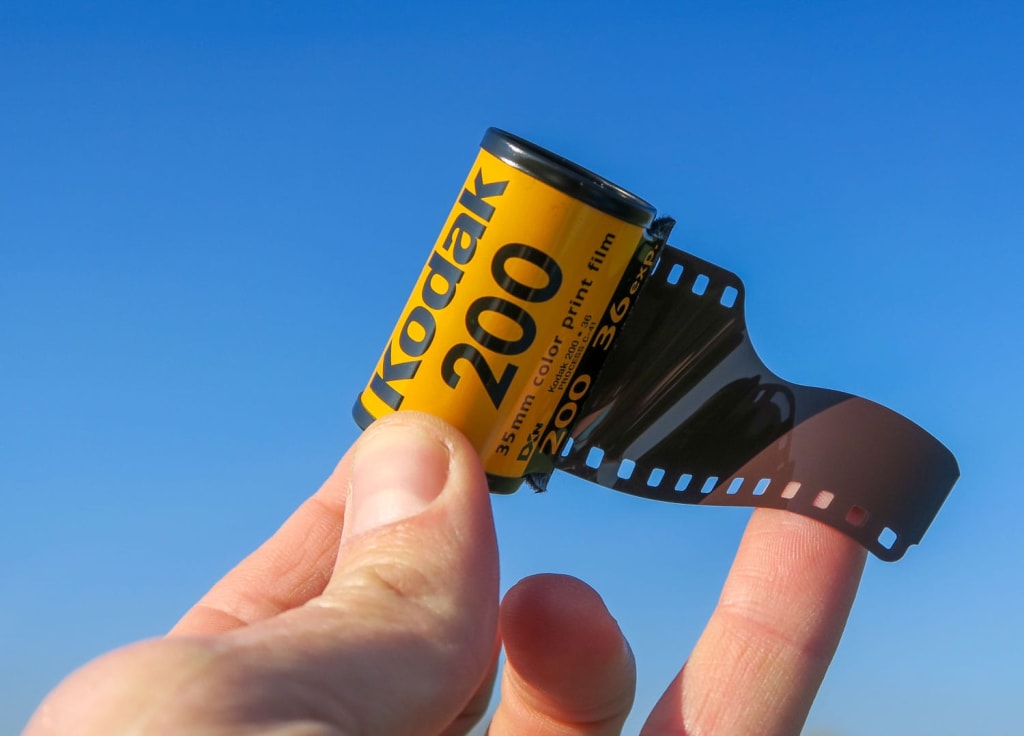
Set the ISO correctly: Ensure that your camera is set to the correct ISO value for the film you're using. For Kodak 200-speed film, set your camera's ISO to 200.
Consider lighting conditions: Kodak 200 film is versatile and works well in a variety of lighting situations, but it may perform best in daylight or well-lit conditions. Keep this in mind when choosing your shooting environment.
Use for general photography: Kodak 200 film is a good choice for general-purpose photography, such as outdoor scenes, portraits, and everyday situations. It strikes a balance between sensitivity and grain, making it suitable for various scenarios.
Experiment with exposure settings: Depending on your camera and shooting conditions, you might want to experiment with exposure settings. If you're shooting in manual mode, consider adjusting aperture and shutter speed to achieve the desired look.
Consider film characteristics: Each film stock has its own unique color profile and characteristics. Kodak 200 is known for producing vibrant colors and moderate contrast. Be aware of these traits when composing your shots.
Remember that photography is an art, and personal preferences play a significant role in choosing the "best" settings. Feel free to experiment and find the style that suits your vision.
Creating a 600-word essay on using Kodak 200-speed film in a camera requires a comprehensive exploration of various aspects. Below is an essay that delves into the characteristics of Kodak 200 film, its optimal use in different situations, and considerations for maximizing its potential.
Unveiling the Versatility of Kodak 200 Film: A Comprehensive Guide for Photography Enthusiasts
In the realm of film photography, the choice of film can significantly influence the outcome of an image. Kodak, a venerable name in the industry, offers a range of films, with Kodak 200 occupying a sweet spot for many photographers. In this essay, we explore the nuances of using Kodak 200-speed film in a camera, unlocking its potential and understanding why it remains a popular choice among enthusiasts.
At the heart of every successful photographic endeavor lies the understanding of the film's characteristics. Kodak 200, with its moderate speed, strikes a balance between sensitivity and grain. The film's ISO rating, a crucial factor in capturing light, is set at 200. This makes it well-suited for a myriad of scenarios, offering versatility that makes it a favorite among photographers engaged in various genres.
When loading Kodak 200 film into your camera, the first step is to ensure that the ISO setting matches the film's speed. Modern cameras often read the DX code on the film canister to automatically set the ISO, but for manual control, it's imperative to adjust the ISO to 200. This step lays the foundation for optimal exposure and ensures that the film reacts to light as intended by the manufacturer.
Kodak 200 film excels in daylight or well-lit conditions, making it an ideal choice for outdoor photography. The film's sensitivity to light captures vibrant colors and subtle nuances in daylight landscapes. Its versatility extends to indoor settings as well, where the moderate speed allows for reasonable performance in controlled lighting environments. This flexibility makes Kodak 200 a reliable companion for photographers who appreciate spontaneity in their craft.
In the realm of general photography, Kodak 200 proves to be a valuable asset. Whether you're capturing candid moments with friends, documenting a family event, or exploring urban landscapes, this film delivers consistent results. Its ability to handle a broad range of scenes, coupled with a forgiving nature in exposure latitude, makes it an excellent choice for those still honing their skills or exploring diverse photographic styles.
Experimentation is the key to unlocking the full potential of Kodak 200 film. While the film's recommended ISO is 200, photographers often find creative opportunities by intentionally overexposing or underexposing. This approach can yield unique results, altering the contrast and color saturation in ways that add character to the final images. In manual mode, photographers can play with aperture and shutter speed settings to achieve specific visual effects.
Understanding the inherent characteristics of Kodak 200 is essential for harnessing its strengths. The film produces vibrant colors with a pleasing saturation that is characteristic of Kodak's color science. Additionally, its moderate contrast ensures that details are retained without sacrificing the dynamic range of the scene. This combination of attributes makes Kodak 200 a reliable choice for photographers seeking a film that faithfully reproduces the beauty of the moment.
When considering the best camera for Kodak 200, the choice often depends on personal preferences and the desired shooting style. The film's characteristics can be accentuated or tempered by the camera's settings and lens choice. Vintage cameras with manual controls provide a hands-on approach, allowing photographers to fine-tune exposure settings for a more tailored result. On the other hand, modern cameras with advanced metering systems can simplify the process, making Kodak 200 accessible to photographers of all levels of expertise.
In conclusion, Kodak 200 film stands as a testament to the enduring appeal of film photography. Its versatility, coupled with a user-friendly nature, makes it an excellent choice for both beginners and seasoned photographers alike. By understanding its characteristics, experimenting with exposure settings, and choosing a compatible camera, photographers can unlock the full potential of Kodak 200, capturing moments with a timeless charm that only film can deliver.
About the Creator
Waqas Ashraf
Join a Thriving Community of Vocal Enthusiasts who Share a Passion for Waqas Unique Perspective. Engage in Discussions, Exchange Ideas, and Connect with Likeminded Individuals.
Enjoyed the story? Support the Creator.
Subscribe for free to receive all their stories in your feed. You could also pledge your support or give them a one-off tip, letting them know you appreciate their work.






Comments
There are no comments for this story
Be the first to respond and start the conversation.